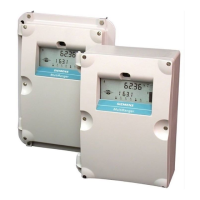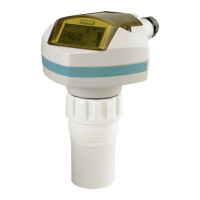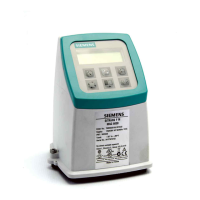Description
2.3 Principle of operation
OXYMAT 64
Operating Instructions, 06/2008, A5E00880383-03
13
2.3 Principle of operation
Principle of operation
The measuring cell consists of a ZrO
2
membrane arranged as a cylinder (tubular). The
sample gas (with a low O
2
content) flows at a constant rate through the inside of the sensor
regulated at 650 °C. The exterior of the sensor is exposed to the ambient air (approx. 21%
O
2
). The two sides of the ZrO
2
membrane are coated with thin platinum films which serve as
electrodes. This produces a stable electrochemical cell. The exterior of this sensor is
exposed to the ambient air (approx. 21% O
2
). The different O
2
concentrations also cause a
different diffusion of the oxygen into the ceramic sensor material. A quantity of oxygen atoms
is ionized equivalent to the oxygen concentration at the electrodes.
A different partial pressure exists due to the differences in concentration on the two sides.
Since ZrO
2
is electrically conductive at 650 °C, there is a migration of ions in the direction of
the lower partial pressure.
A gradient in the oxygen ions is produced across the thickness of the ZrO
2
membrane which
leads to a potential difference between the two platinum electrodes in accordance with
equation (1).
The inclusion of crystal lattice faults by doping the ZrO
2
material with Y
2
O
3
and/or CaO -
originally to prevent the formation of cracks in the ceramic material - increases the diffusion
ability of the O
2
ions in the ZrO
2
lattice.
Catalytically active ZrO
2
sensor (CAZ)
The electrode material is made of platinum (Pt). This type of sensor therefore has a large
cross-sensitivity in the presence of flammable components in the residual gas.
Catalytically inactive ZrO
2
sensor (CIZ)
The catalytically inactive sensor has the same basic design as the CAZ auf. However, the
contacts and the electrode surface inside the cylinder are made of a specially developed
material which largely prevents catalytic oxidation of H
2
, CO and CH
4
.

